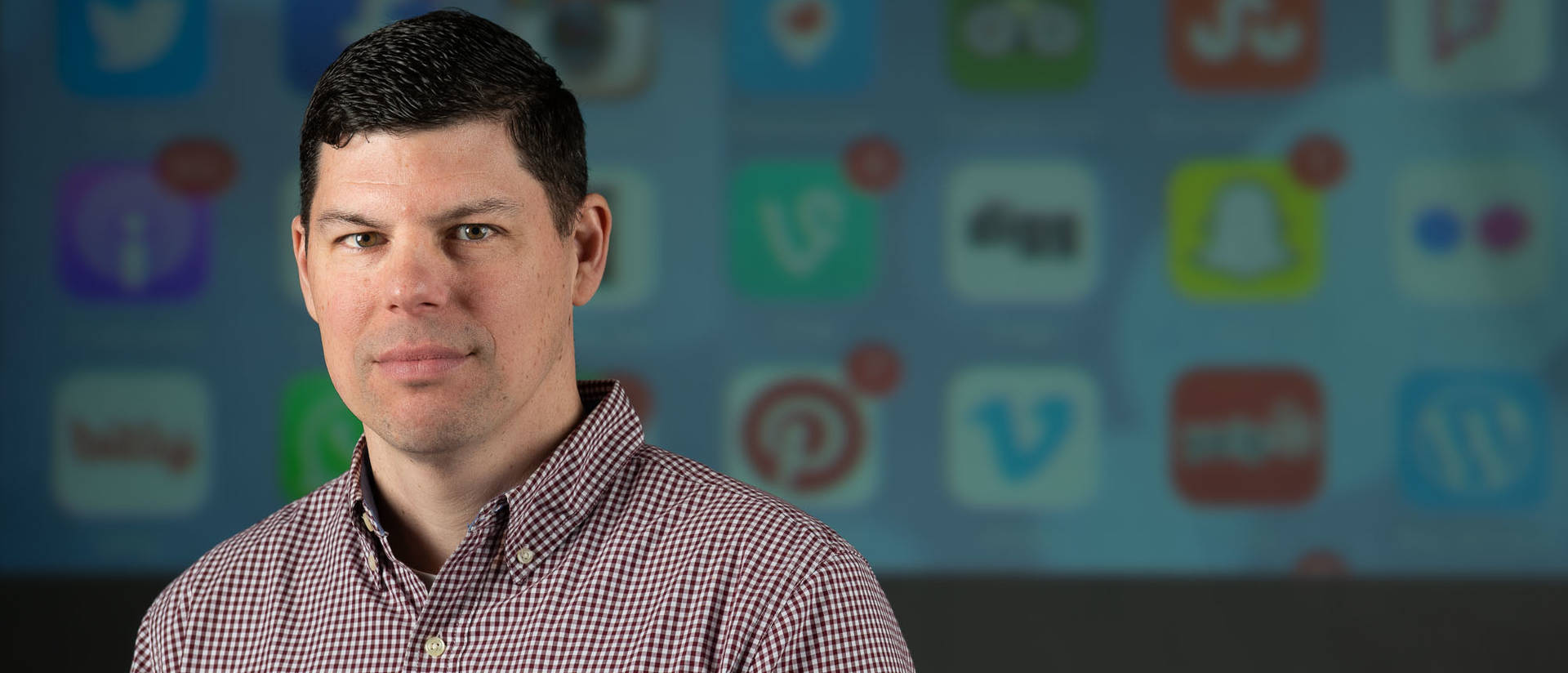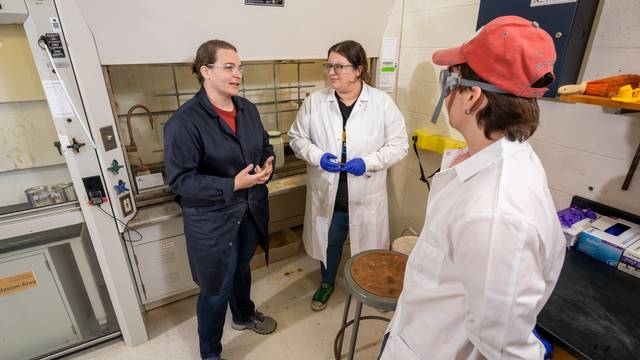A small but growing number of teens are participating in sexting, the practice of sending or receiving explicit images usually via mobile devices, an indication that current efforts to discourage these behaviors are not effective, according to a team of internationally known cyberbullying experts.
“Despite threats of prosecution, punishments and fear-based messages from the media and many adults, our research shows that the number of teens who are sharing sexually explicit or sexually suggestive images is increasing,” says Dr. Justin Patchin, a professor of criminal justice at UW-Eau Claire. “What’s being done to discourage it, isn’t working.”
Given their findings, Patchin and his research partner, Dr. Sameer Hinduja of Florida Atlantic University, are proposing what they acknowledge is a controversial new approach to addressing teen sexting.
It’s time, they say, to teach teens safe sexting.
“We know it will be a bit provocative, but we think it is important to have a public conversation about teaching safe sexting,” Patchin says.
Hopefully, Patchin says, the researchers’ newest article, “It’s Time to Teach Safe Sexting,” published this month in the prestigious Journal of Adolescent Health, will jumpstart the conversation.
“We’re advocating for empowering teens with information, strategies and tools to reduce risk and minimize harm when engaging in sexting,” Patchin says. “Just as sex education has evolved from an abstinence-only curriculum, we should acknowledge the current realities that exist when technology and youth development intersect.
“It is time to proactively teach safe sexting to teens so the most significant of the consequences of participating in sexting can be minimized.”
Their 2019 national research found that 14% of middle or high school youth had sent and 23% had received sexually explicit images, an increase from what they found in their 2016 research, Patchin says.
Sexting isn’t the epidemic that many believe, but the reality is that some teens are exchanging nude images, and the number who are doing it is increasing, Patchin says.
“Teens who participate in sexting open themselves up to the possibility of many significant and long-term consequences, including things like humiliation, extortion, victimization, school sanctions, reputational damage and even criminal charges,” Patchin says.
To date, much of the messaging to teens around sexting has focused on potential legal and other dangers, Patchin says.
However, that fear-based approach may actually increase the potential harm to teens who sext because they may be so afraid of getting into legal or other trouble that they won’t seek needed help, Patchin says.
“If a teen feels like their options for moving on after sharing an explicit image are limited, they might be vulnerable to extortion or even suicide,” Patchin says. “They may feel trapped, unable to ask an adult for help, fearing significant irreversible damage.
“Emphasizing the worst-case outcome does little to help youth who find themselves in a difficult situation as a result of the behavior.”
Studies have consistently shown that abstinence-only sex education is not effective, and their research finds that the same is true of abstinence-only sexting discussions, Patchin says.
“This is not about encouraging sexting behaviors any more than sex education is about encouraging teens to have sex,” Patchin says. “It recognizes the reality that young people are sexually curious, and some will experiment with a variety of behaviors, including sexting.”
Safe sexting education curriculum would teach young people about the possible consequences of participating, while also equipping them with knowledge that could help them minimize the harm that may result.
Examples of what could be included in safe sexting curriculum are not including images that show your face or any features that could be used to identify you; only sharing images with someone you know well and trust; turning your device location services off on all social media apps; and immediately deleting images from all devices.
“These are just a few of the messages that could be part of safe sexting messaging to youth at a developmentally appropriate age,” Patchin says. “Many issues could be minimized if teens reduce the likelihood that images will be distributed beyond their original target and if it were more difficult to identify who is in them.
“While it would be safer if minors didn’t sext at all, we know that some will do it, so we need to find ways to minimize the harm that comes from it.”
Patchin and Hinduja include in their journal article suggested messages around safe sexting. However, the researchers see those suggestions as a starting point in what should be a comprehensive conversation.
His hope, Patchin says, is that educators and other experts would create the actual safe sexting curriculum.
More research needs to be done on teen sexting, which could help inform the specific messages included in safe sexting programming, he says.
“For example, learning more about why teens choose to participate in sexting or choose to not participate might help us better identify safe sexting messaging,” Patchin says. “Identifying what strategies work could help us give teens tools that will help them to avoid sending images when pressured.”
Already, Patchin says, many parents and educators have told him that they support the idea of safe sexting education.
“While participating in sexting is never 100% safe, they agree that giving youth strategies to reduce possible harm makes sense,” Patchin says. “The goal is not to teach teens how to sext and get away with it, but to give them tools to stay safer if they do choose to participate in it.
“We need to stay up to date on issues teens are facing. Sexting isn’t going away so we can’t just ignore it. There is a lot of conversation and learning that needs to take place, and hopefully this will be a start.”
Photo caption: Dr. Justin Patchin, professor of criminal justice, is an internationally known expert on cyberbullying.




